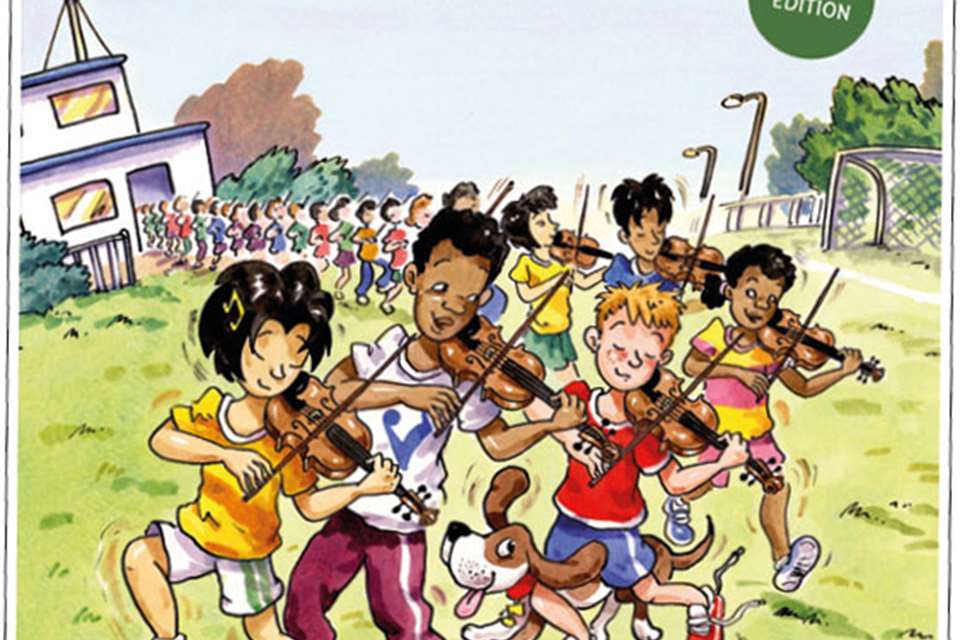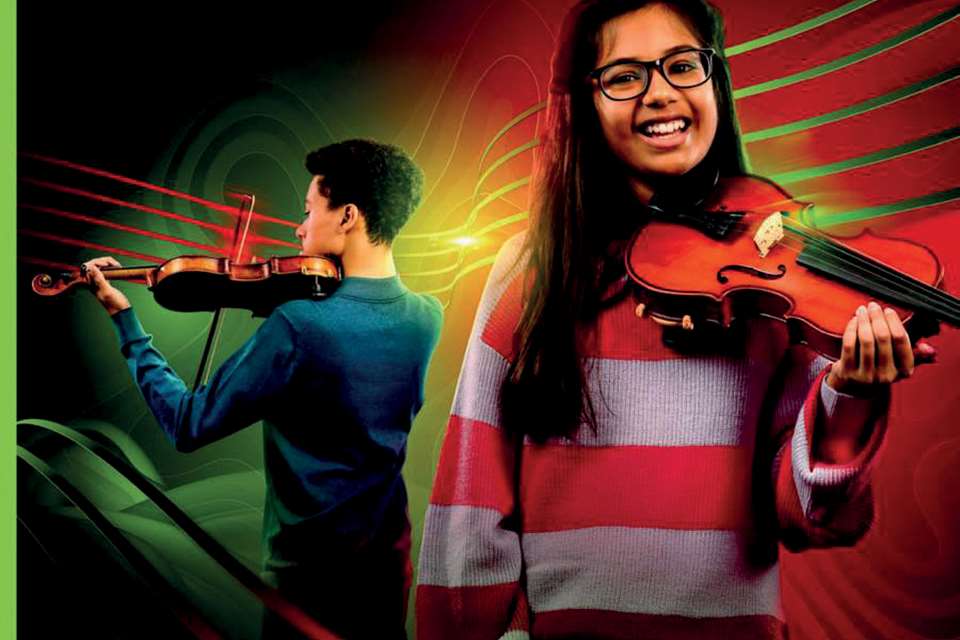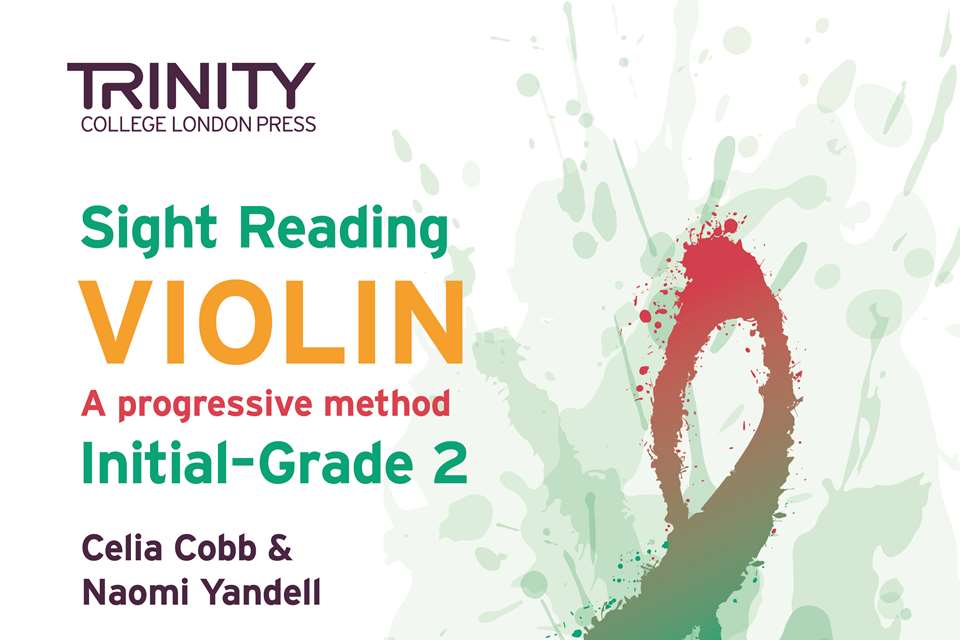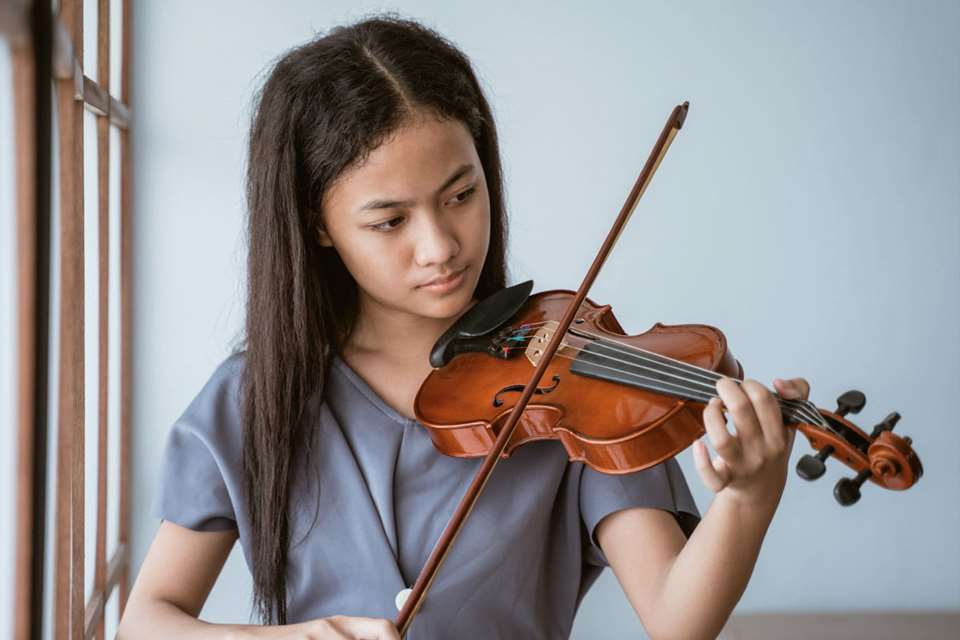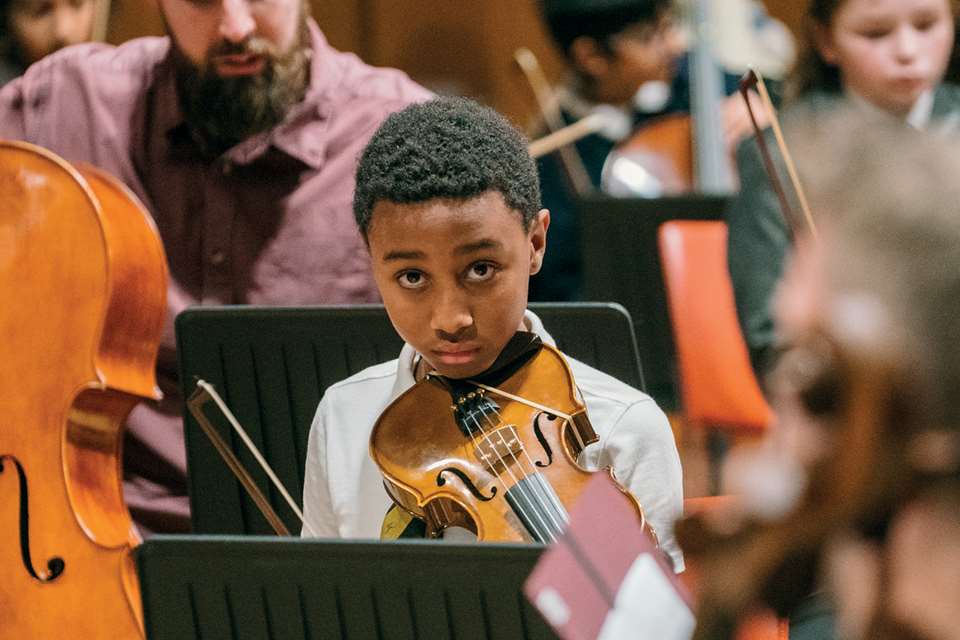Sheet music reviews: Violin Junior, Lesson Book 1
Joanne Davies
Monday, April 1, 2024
Joanne Davies shares her view on the first lesson book in Schott's Violin Junior series.
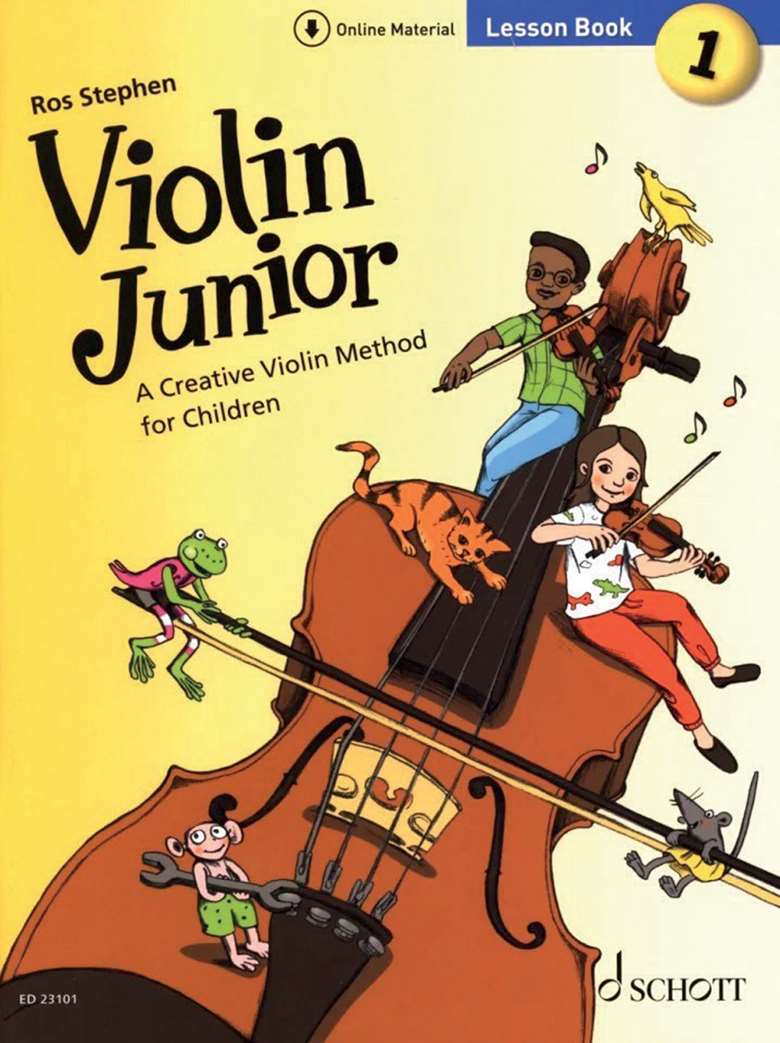
This starter violin tutorial, by Ros Stephen, is aimed at children of primary school age. The cover states it is ‘a creative violin method for children’, and it certainly lives up to this description. The book is packed with an exciting mix of carefully crafted music, fun facts, technical help, imaginative illustrations and creativity.
Violin Junior starts with an introduction to Fiocco the Frog, a playful character who appears on every page, offering technical advice and ‘fascinating fiddle facts’. He is an appealing addition, and will be much enjoyed by young pupils starting out on their musical journeys.
The first section focuses on building musical skills and knowledge. There are clapping games, very simple teacher-pupil duets, and some opportunities to compose. It is refreshing to see such content from the outset, providing a solid foundation for pupils to grow musically.
The open-string pieces are simple and come with teacher parts or teacher-pupil echoes, to keep the tone light and enjoyable. As the book progresses, we are introduced to different basic note values, rests and time signatures. ‘Pulse’ is examined, and pupils have a chance to clap in time and appreciate the importance of feeling the beat. The pieces cover an interesting range of musical styles including folk, pop, jazz and Brazilian bossa.
Notably, Violin Junior comes with links to a range of useful resources. There are both piano and violin accompaniments as well as audio tracks for students to play along to at home. Furthermore, Ros Stephens has included some online video tutorials to help with different aspects of technique. There are also some links on the website for students with additional needs, designed to encourage and inspire.
To give some idea of the thorough approach taken by the author, we see the appearance of the first finger at page 30. Here we find more duets and composition suggestions, subtly bringing in the use of the first finger. I was fascinated to see that harmonics are also introduced at this early stage. It feels as though Ros Stephen is conscious of bringing about a realisation of the physicality of the instrument. Pupils are encouraged to ‘zoom’ up and down the fingerboard, giving them a strong sense of the instrument as a whole and helping to free-up the left hand and arm.
Dynamics are brought into play as we move through, along with simple Italian terms relating to tempo and style. Some pieces offer a selection of rhythmic options. Improvisation is encouraged, and there are pages where pupils are asked to fill in missing notes on the stave through playing by ear.
The second, third and fourth fingers are, in turn, brought into the spotlight. Alongside more challenging note-reading, pupils are introduced to repeat signs, slurs and ties. There is a beautifully written explanation of ‘the upbeat’, followed by some pieces to demonstrate. The book includes some scales and arpeggios, focusing on the one octave scales of G, D and A. Two different slurring options are given, in line with the Grade 1 requirements. It is worth noting that the book is not overcrowded with printed fingerings. In fact, printed directions regarding fingerings and bowings are kept to a minimum, which will invariably help with sight-reading.
What makes Violin Junior different to other first violin books? Put simply, Ros Stephen leaves no stone unturned. The book has been meticulously crafted with close attention to detail on every page.
An impressive feature is the gentle pace of learning set by the author. This is bound to create a happy pathway for beginners, avoiding any sudden disruptions to the learning curve. Visually, too, the book is entertaining and vibrant, with plenty of interactive content.
As I am sure is apparent, I can wholeheartedly recommend Violin Junior. The book contains all the ingredients that will ensure a good grounding in the violin.
I must also mention that Ros Stephen has written a theory book, Violin Junior: Theory Book 1, and book of concert pieces, Violin Junior: Concert Book 1, which sit very comfortably alongside the lesson book. The concert book contains slightly longer pieces, which come with both violin and piano accompaniment. It is a useful addition, which will benefit teachers looking for new concert repertoire and students wishing to develop further their newfound skills. A trio of Violin Junior 2 books is also available, which follow straight on from the beginner offerings.


